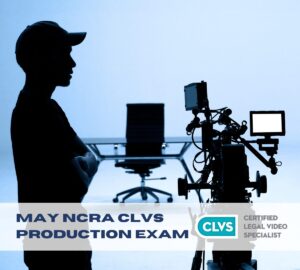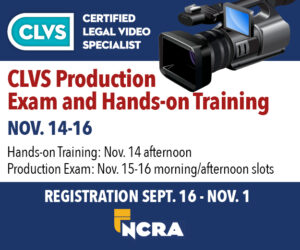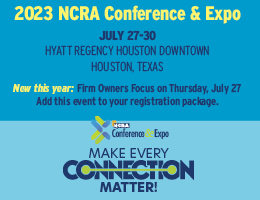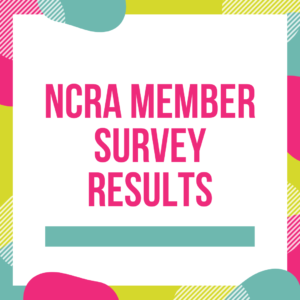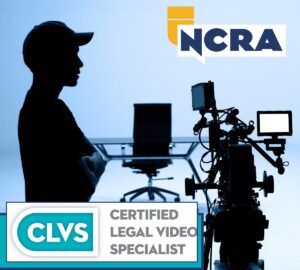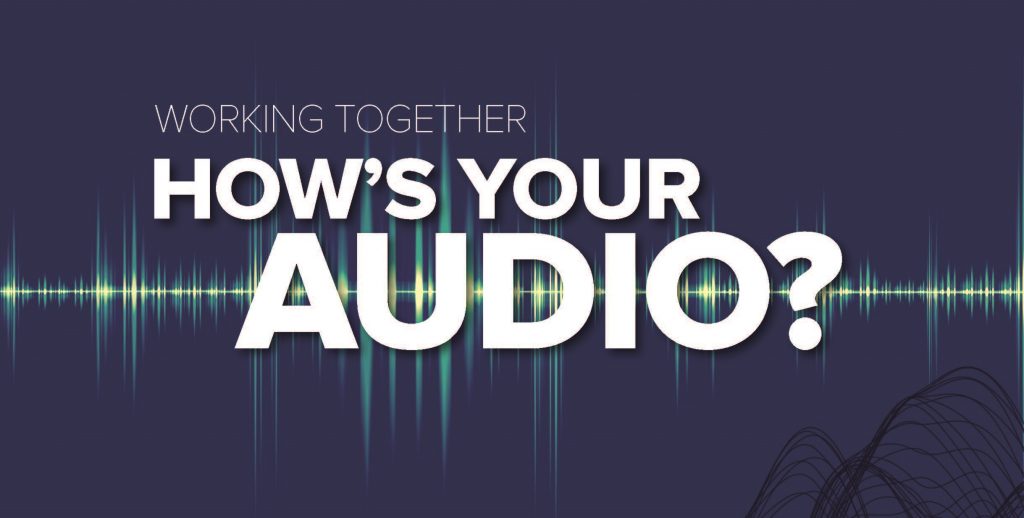
By Mindy Sindiong
Part of a CLVS’s training is to provide great video and audio for our clients. However, we have two clients: the attorney(s) and the court reporter. Yes, I said court reporter. Part of our job is to offer the court reporter some form of audio, whether it be a live feed from our audio mixer or a digital computer file recorded onto an SD card. The better audio we provide, the more court reporters will want and request to work with a CLVS. I’ll get more into the relationship between a CLVS videographer and a court reporter in a moment. First, I want to discuss the importance of the audio.
The CLVS program teaches a CLVS the audio chain, meaning audio should come from wired microphones to the mixer, from the mixer to the video recording devices, and, from there, into a monitoring device, otherwise known as headphones. Unfortunately, many videographers seem to forget the importance of audio in video. We are sometimes swayed by the technical specs of that new camera that just came out. We want the video aspect of it to look great on that new 4K video monitor. Can we see every line on someone’s face? And, in the process, audio sometimes falls to the wayside. This is a shame because, in reality, the audio is of utmost importance, especially in video depositions. The testimony is the deposition. Try an experiment. Turn on the TV with the sound turned down and watch for a few minutes. Turn the sound up and turn your eyes away from the TV and just listen. In most cases, you will get a better understanding of what is happening by listening rather than watching. Now, mind you, I am not disregarding the importance of the video portion of a recorded deposition. Studies have shown that much of how we communicate is through body language, but that would be a different article.
 A good audio recording will also capture the nuances of the spoken word. Is the voice changing in pitch? Is the speech speeding up or slowing down? How long was that pause before the answer? Did that question seem to come out right? These telltale signs are all an important part of communication. If the video-recorded deposition has audio that has a lot of distracting noise, noise that can come from a bad connection, poor quality microphones, an audio mixer that introduces a bad hum sound, and so on, then the spoken voice starts losing its relevance to the listener. That is why the CLVS training stresses the importance of setting up, monitoring, and troubleshooting your audio chain.
A good audio recording will also capture the nuances of the spoken word. Is the voice changing in pitch? Is the speech speeding up or slowing down? How long was that pause before the answer? Did that question seem to come out right? These telltale signs are all an important part of communication. If the video-recorded deposition has audio that has a lot of distracting noise, noise that can come from a bad connection, poor quality microphones, an audio mixer that introduces a bad hum sound, and so on, then the spoken voice starts losing its relevance to the listener. That is why the CLVS training stresses the importance of setting up, monitoring, and troubleshooting your audio chain.
Back to the relationship with the court reporter. As I said before, we also teach a CLVS to offer the court reporter some sort of way to monitor the audio, whether it be a live feed or a recording. Court reporters should also be prepared for working with a CLVS and may need to know how to make some audio adjustments on their end and be able turn up or down the input levels on their laptops. Being prepared to make these minor adjustments has huge payoffs in the quality of the audio for scoping and proofing later.
Being able to offer a high-quality live feed to the reporter can have other benefits. I can’t tell you how many times we have done depositions during which one of the participants was extremely soft spoken. Having a microphone on the witness and being able to boost that audio signal through the mixer can make all the difference in the world. The court reporter will be very thankful to be able to hear that witness loud and clear using a headset. I’ve always felt that if you take care of the court reporter, he or she will take care of you. In this business, I believe the court reporter is my most valued partner and friend.
Mindy Sindiong, CLVS, of Lawrenceberg, Ind., is a member of NCRA’s Certified Legal Video Specialist Council. She can be reached at Mindy@DeBeneEsseMedia.com.







